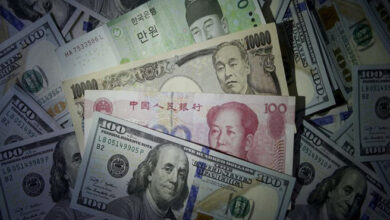As markets anticipate further dollar depreciation in 2023, FX in Asia rises.

As investors gambled on more gradual interest rate increases by the U.S. Federal Reserve and a declining dollar, the majority of Asian currencies increased marginally in holiday trade on Monday, signalling a favourable start to the new year.
The Japanese yen maintained its impressive gains from the previous week, increasing by 0.1% to 130.96, its highest level against the dollar in five months. The currency lost about 15% of its value in 2022, but it started to recover toward the end of the year, especially after the Bank of Japan unexpectedly struck a hawkish note at its December meeting.
Nevertheless, the Japanese economy has more challenges ahead, particularly as rising inflation and the COVID-19 pandemic uncertainty continue to restrain development. Data released this month revealed that in November, Japanese consumer inflation soared to a 41-year high.
As the nation struggles with an unprecedented rise in COVID-19 infections, economic data released over the weekend revealed that manufacturing production in China declined even more in December. This led to a 0.1% decline in the value of the Chinese yuan in offshore trade. After significantly easing most anti-COVID restrictions in December, China experienced a sharp increase in COVID-19 cases.
However, as the nation emerges from nearly three years of draconian lockdown measures that significantly impeded growth, markets are preparing for an eventual economic rebound in the country.
As the Federal Reserve started hiking interest rates in 2022, the yuan saw significant losses, along with the majority of Asian currencies. This trend is generally anticipated to continue, with U.S. interest rates projected to stay high through 2023.
Due to the worldwide New Year’s celebrations, there was little trading in the dollar index and dollar index futures on Monday. However, the dollar increased by about 8% in 2022 as the Federal Reserve started one of its most aggressive rate-hike cycles to rein in inflation that had been out of control.
Nevertheless, the dollar has dropped recently after statistics indicated that US inflation has probably peaked, which is expected to encourage the Fed to raise interest rates more slowly. The central bank raised interest rates by a very modest 50 basis points in December, and another 25 basis point increase is expected in February.
After suffering severe losses in 2022, the Indian rupee increased by 0.1%. The pressure on the currency was mostly caused by India’s significant trade deficit and reliance on oil imports. While the economy of the nation did well in 2022, there are now questions about whether this success will continue into the following year.
Data revealed that South Korea’s trade balance remained negative in December, with both exports and imports contributing to the decline of the won by 0.6%.




